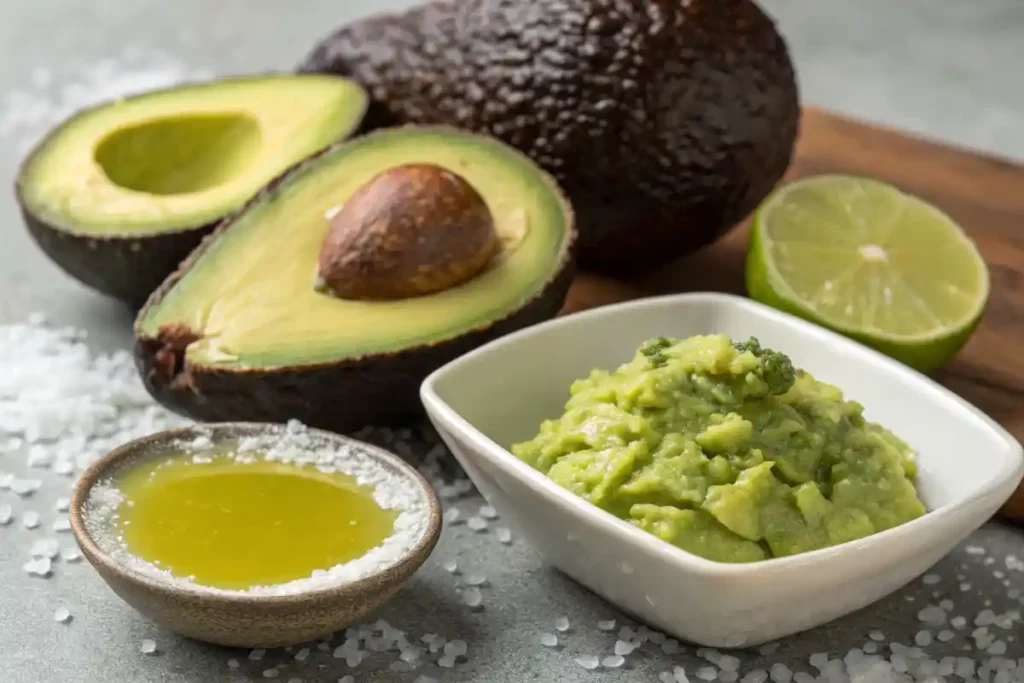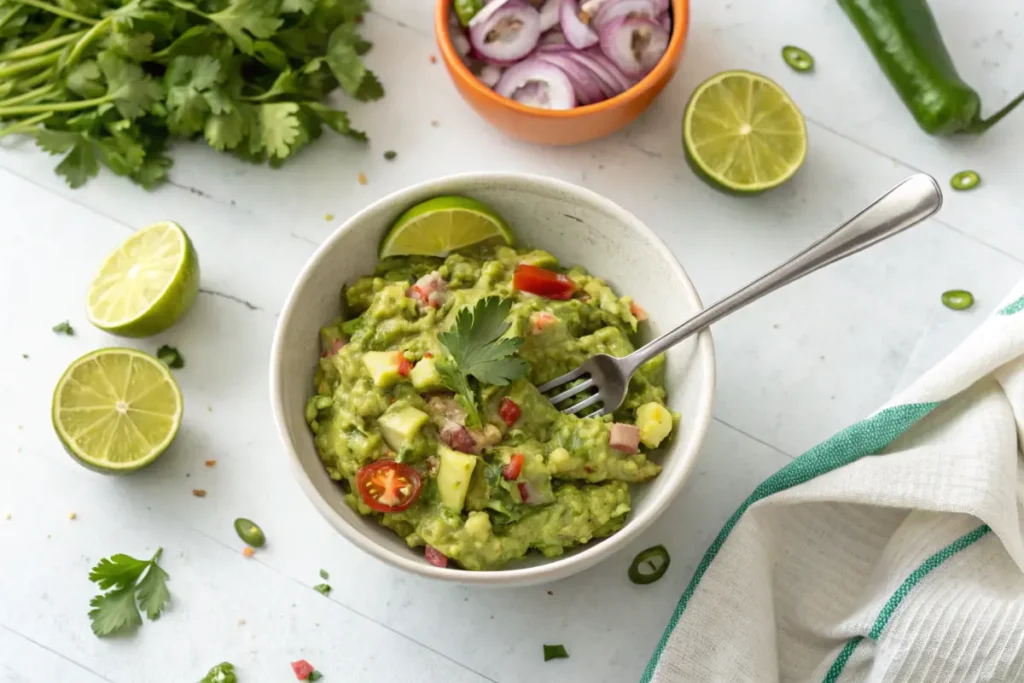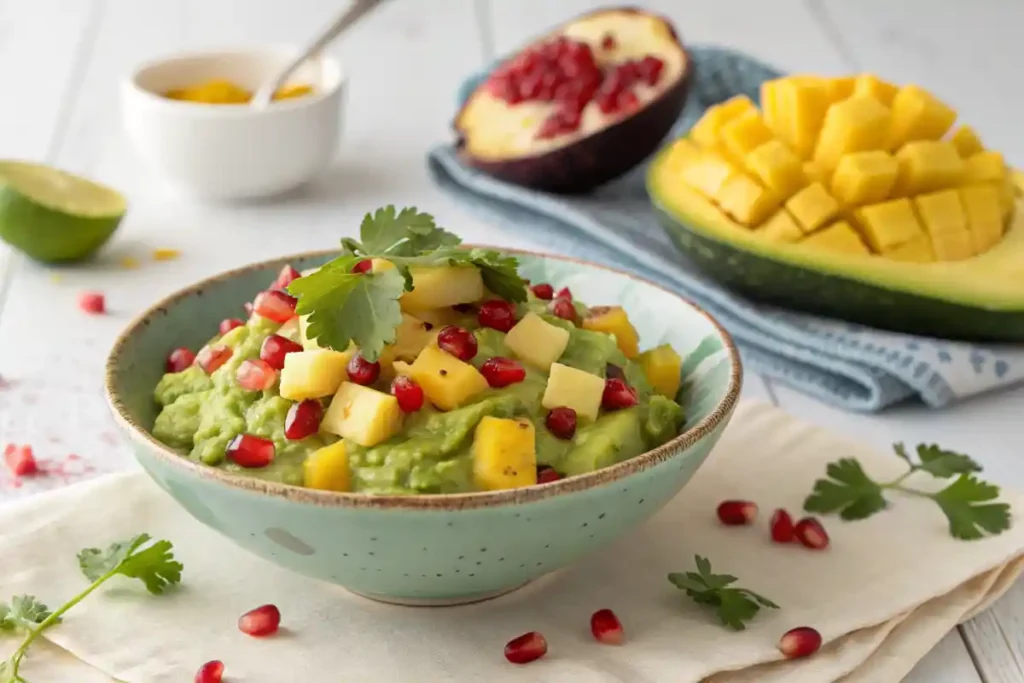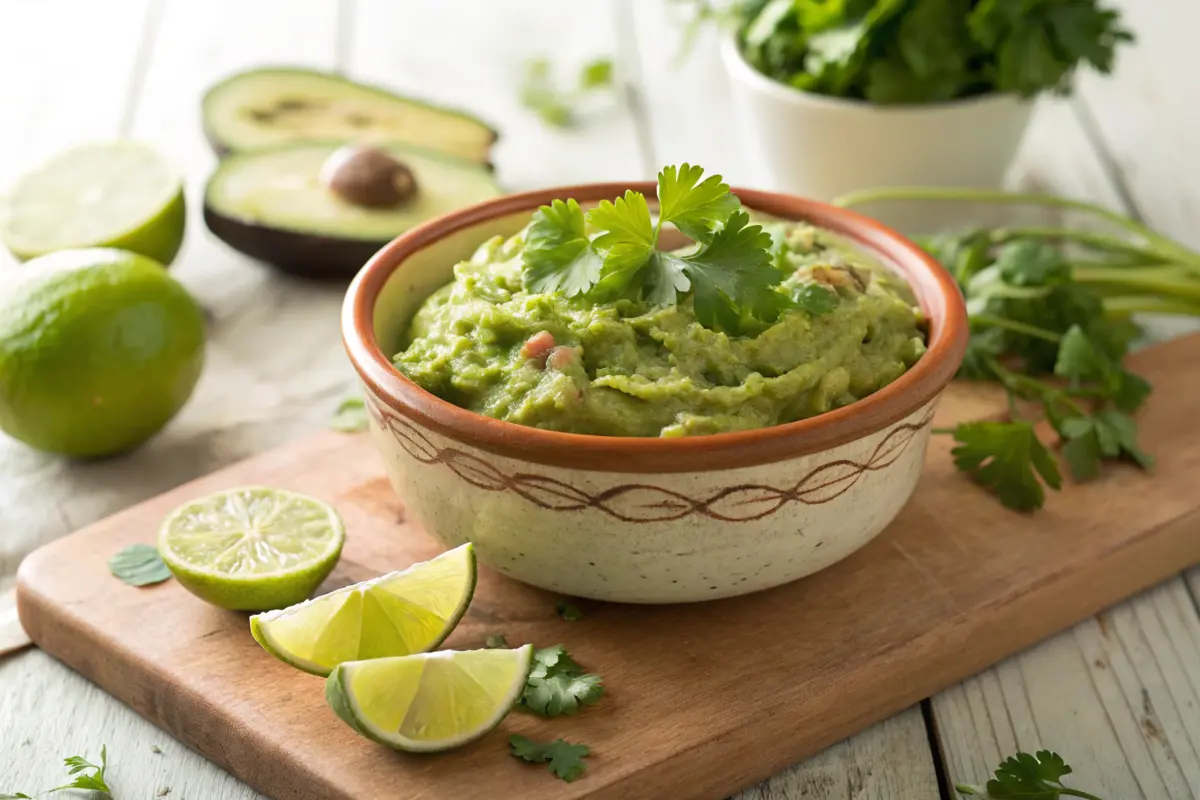Guacamole is a simple yet versatile dish loved worldwide for its creamy, fresh, and bold flavors. But here’s the question that intrigues guacamole enthusiasts: What is the secret to good guacamole? Is it the quality of the avocados, the perfect lime-to-salt ratio, or a little-known technique passed down through generations?
In this guide, we’ll uncover the secrets to making guacamole that’s not just good but extraordinary. From choosing the best ingredients and mastering the ideal texture to avoiding common mistakes and experimenting with unique twists, this article will leave no stone unturned. Let’s dive into the essential elements that turn guacamole into a true culinary masterpiece.
The Basics of Good Guacamole
Key Ingredients for Perfect Guacamole

Good guacamole starts with the best ingredients. The foundation, of course, is ripe avocados. They should feel slightly soft when pressed but not mushy, ensuring a creamy texture without bitterness. Fresh lime juice is another must-have, adding a zesty tang that enhances flavor while keeping the guacamole green and vibrant. Finally, a pinch of salt is the magic touch, amplifying all the natural flavors.
The Role of Freshness in Guacamole
Freshness makes all the difference in guacamole. Always opt for freshly chopped cilantro, which brings an herbal brightness that dried herbs simply can’t replicate. Similarly, fresh lime juice is far superior to bottled alternatives. The acidity from freshly squeezed lime not only balances the richness of the avocado but also preserves the dip’s bright green hue.
Techniques for Achieving the Ideal Texture

To Mash or Not to Mash: Balancing Chunky and Creamy
The texture of guacamole is a defining factor that can elevate it from ordinary to extraordinary. Some prefer their guacamole chunky, where the avocado pieces provide a satisfying bite, while others love a smooth, creamy texture that spreads easily.
The mashing method you choose has a significant impact on the texture. Using a fork allows for more control, making it easy to leave some chunks intact. A potato masher creates a smoother consistency, ideal for those who enjoy a creamier base. For the most traditional approach, use a mortar and pestle; it not only blends the avocado but also infuses the flavors of the other ingredients, like lime juice and cilantro, into the avocado itself.
Mixing Ingredients Strategically
The order in which you mix the ingredients also matters. Always start with the avocados, mashing them to your desired consistency first. Add lime juice and salt early to lock in flavor and prevent browning. Fold in ingredients like diced onions, tomatoes, and cilantro gently, ensuring an even distribution without over-mixing.
Over-mixing can dilute the distinct flavors of each ingredient, leaving your guacamole tasting flat. By layering flavors and combining thoughtfully, you’ll achieve a dip that’s vibrant and balanced.
Customizing Guacamole to Suit Different Tastes
Making it Spicy or Keeping it Mild
For those who crave a little heat, peppers are the perfect addition. Jalapeños bring moderate spice and a crisp, fresh flavor, while serranos add a sharper, hotter kick. To keep it mild, remove the seeds and membranes from the peppers before chopping.
If you’re catering to guests who prefer mild guacamole, skip the peppers entirely and rely on the core ingredients to deliver flavor. A little extra lime juice or cilantro can make up for the absence of spice.
Sweet and Savory Additions

Customizing guacamole doesn’t stop at spice. Adding fruits like diced mango, pineapple, or pomegranate seeds can create a sweet contrast that balances the creamy and savory elements of guacamole. These additions are especially popular in tropical-inspired variations.
For savory depth, incorporate diced onions, garlic, or tomatoes. Onions add sharpness, garlic introduces a warm, earthy flavor, and tomatoes contribute a juicy texture that enhances every bite.
Avoiding Common Guacamole Mistakes
Using Overripe or Underripe Avocados
The foundation of great guacamole lies in the quality of your avocados. Overripe avocados, characterized by mushy flesh and brown spots, can impart a bitter taste and ruin the texture. On the other hand, underripe avocados are firm, difficult to mash, and lack the creamy, buttery flavor that guacamole needs.
To identify the perfect avocado, look for one that feels slightly soft when pressed but isn’t mushy. The skin should have a dark, even tone (for Hass avocados) without any visible bruising. If the stem comes off easily to reveal a vibrant green underneath, it’s ready to use.
Overpowering the Avocado
The beauty of guacamole lies in its simplicity, with the avocado as the star ingredient. Adding too many mix-ins or over-seasoning can overpower the delicate, nutty flavor of the avocado. Stick to a minimalist approach: lime juice, salt, cilantro, and a few complementary ingredients.
It’s tempting to pile on flavors, but less is more when it comes to guacamole. Overloading it with spices or excessive onions and tomatoes can make the dip taste chaotic instead of balanced.
Failing to Prevent Browning
Nothing is more unappetizing than brown guacamole. The culprit? Oxidation. To keep guacamole fresh, mix in lime juice as soon as the avocados are mashed. Lime juice acts as a natural antioxidant, slowing down browning.
Additionally, store guacamole in an airtight container, pressing a layer of plastic wrap directly onto the surface to minimize air exposure. These simple techniques will keep your guacamole green and vibrant for longer.
Enhancing Flavor with Spices and Herbs
The Essential Role of Salt
Salt isn’t just a seasoning—it’s a flavor enhancer that brings out the best in every ingredient. Kosher salt is the ideal choice for guacamole, offering a clean, pure taste that’s easy to control. Sea salt can add subtle mineral notes, while table salt works in a pinch but should be used sparingly to avoid over-salting.
Start with a small pinch, mix well, and taste as you go. Adding too much salt at once can be difficult to correct, so gradual adjustments are key.
Incorporating Additional Herbs
Cilantro is a staple herb for guacamole, providing a fresh, citrusy brightness that complements the avocado perfectly. However, not everyone loves cilantro’s bold flavor. For those who are cilantro-averse, substitute it with parsley for a milder taste or even basil for a sweet, peppery twist.
Herbs should be chopped finely and added sparingly to avoid overpowering the guacamole. Fresh herbs are always preferred over dried for their vibrant flavor.
Adding Depth with Spices
Spices can transform guacamole from simple to spectacular. A pinch of cumin adds a warm, earthy undertone, while chili powder introduces a smoky heat. For an extra layer of complexity, sprinkle in a little smoked paprika, which enhances the dip’s richness without overwhelming the other flavors.
Pairing and Serving Suggestions
The Best Foods to Pair with Guacamole
Guacamole is incredibly versatile, pairing well with a wide range of dishes. Its creamy texture and fresh flavor make it the perfect companion to tortilla chips, a classic option for dipping. For a more robust meal, use guacamole as a topping for tacos, burritos, or grilled meats like chicken, steak, or shrimp.
Beyond traditional pairings, guacamole works wonderfully as a sandwich spread, adding moisture and richness to burgers or wraps. For a lighter option, use it as a salad topping, where its creamy consistency doubles as a flavorful dressing.
Creative Serving Ideas
Take your guacamole presentation to the next level with creative serving methods. Try making guacamole boats by hollowing out avocado shells and filling them with the prepared dip. This eco-friendly and visually appealing option is perfect for intimate gatherings.
For larger events, create layered dips, placing guacamole at the center of a glass dish surrounded by layers of sour cream, salsa, beans, and cheese. Guests can scoop through the layers, enjoying a blend of flavors with every bite.
Presentation Tips
A beautifully presented guacamole can elevate its appeal. Garnish the dip with thinly sliced jalapeños, lime wedges, or a sprinkle of pomegranate seeds for a burst of color and texture.
Serve guacamole in rustic ceramic bowls for a homely feel, or use natural avocado shells for an elegant, minimalist touch. Place the dish on a wooden or marble platter, surrounded by accompaniments like tortilla chips, vegetable sticks, or crackers, to make the presentation as inviting as the guacamole itself.
Frequently Asked Questions
What is the secret to making guacamole taste authentic?
The secret lies in using fresh, high-quality ingredients and sticking to traditional preparation techniques. Start with perfectly ripe avocados, fresh lime juice, and finely chopped cilantro. Diced onions and a pinch of salt are essential for adding sharpness and depth. Traditional recipes keep the ingredient list simple, focusing on balancing flavors to let the avocado shine. Using a mortar and pestle, as the Aztecs did, can also infuse the ingredients more thoroughly into the avocado for an authentic flavor.
How do I keep guacamole from turning brown?
Preventing browning is all about limiting exposure to air. Mix lime juice thoroughly into the guacamole, as its natural antioxidants slow oxidation. Store the dip in an airtight container, pressing plastic wrap directly onto the surface of the guacamole to create a seal. These methods will keep your guacamole vibrant and fresh for longer.
Can I make guacamole ahead of time?
Yes, guacamole can be prepared in advance, but timing is key. To maintain freshness, prepare it no more than a few hours before serving. Use lime juice and an airtight container to minimize browning. Store it in the fridge and give it a quick stir before serving. If you’re prepping the ingredients early, wait to mash the avocados until closer to serving time.
What is the ideal texture for guacamole?
Great guacamole achieves the perfect balance between creamy and chunky. Mash the avocados with a fork or potato masher to control the consistency, leaving small chunks for texture. The addition of diced ingredients like onions and tomatoes adds variety to each bite, while over-mixing can make the guacamole too smooth and lose its character.
How can I make guacamole healthier?
For a healthier version, reduce the salt and skip high-calorie add-ins like sour cream or cheese. Instead, add nutrient-rich mix-ins like diced tomatoes, bell peppers, or corn. Pair guacamole with veggie sticks instead of chips for a low-carb snack. You can also use Greek yogurt as a substitute for creaminess without extra fat.
What are the best substitutes for cilantro?
Not everyone loves cilantro, and that’s okay! Parsley is the best alternative, offering a fresh, mild flavor. For a unique twist, try basil for a slightly sweet, peppery note, or a small amount of mint, which adds a refreshing zing without overpowering the guacamole.
Conclusion
The secret to making good guacamole lies in its simplicity. Start with fresh, high-quality ingredients like ripe avocados, freshly squeezed lime juice, and vibrant cilantro. Balance is key—too many mix-ins or overly strong flavors can overpower the avocado, while the right combination of creamy texture and subtle enhancements allows the avocado to shine.
Mastering basic techniques, such as mashing to achieve the ideal texture and layering ingredients thoughtfully, ensures a guacamole that’s flavorful and satisfying. Whether you prefer it spicy with a kick of jalapeños or mild with just a touch of lime, guacamole is a canvas for creativity.
Don’t be afraid to experiment. Add tropical fruits like mango for sweetness, sprinkle in spices like cumin for warmth, or try alternative herbs like parsley if cilantro isn’t your thing. These personal touches make guacamole uniquely yours.
Above all, remember that guacamole’s greatest strength is its simplicity. When made with care and high-quality ingredients, even the most basic recipe can be extraordinary. So grab those avocados, mix in a little creativity, and enjoy this timeless dip in all its delicious forms!

